
Stone Floor Cleaning Covent Garden
Experience The Very Best Stone Floor Cleaning Covent Garden.
The Way We Work Together
Provide The Size And Sort Of Stone
- A handful of photos showing the floors and the sizes usually are all we want.
- Once we have defined your needs we will email a comprehensive written quote.
You Will Receive A Quick Reply
- Stone floors can often have many different finishes, therefore we will include alternatives to accommodate most budgets.
- We shall also email a document featuring examples of similar work.
We Decide On A Working Schedule
- We show up prepared for work as well as on time.
- As we finish you'll be thrilled
Exactly Why You Should Contact London Stone Care
- Providing stone floor cleaning Covent Garden, Polishing, Repair and Full Restoration Services.
- Working with time-honored practices with the latest techniques and equipment to provide the best result.
- Whether you're intending to restore or refinish your stone or tile floors, we are confident that we can help you.
- delighted to assist you you with cleaning and maintenance advice
- After restoring a tile and stone floor, we provide you with a comprehensive ongoing maintenance program.
Contact Us Now!
Your very own stone floor cleaning Covent Garden quote is simply a click away.
Our Specialist Stone Floor Cleaning And Restoration Services In Covent Garden Revealed
Marble Floor Restoration

An original appearance on marble will ultimately loose its shine. Scratches and stains pile up and dull the original shine. The best way to bring back the finish is through polishing the tiles.
We utilise specialised equipment and diamond tooling to grind, hone and polish the stone. to the highest standard
Nearly all marble tile floors are uneven because the tiles are not laid level. We can grind off the irregular tile edges, making a floor surface level. Marble tile grinding is a professional process, providing great results.
Following grinding, the tiles will be at the same level the grout. The marble will have the appearance of appearing as an individual slab of stone.
It is much easier to mop a smooth floor than a jagged floor. A smooth marble floor doesn't have grout depessions to hold grime. If your marble has cracks or chips, we can repair the damage with resin fillers, colour matched with the marble. We will advise the correct marble restoration service.
Get more information about our Marble Polishing Covent Garden service and our entire professional cleaning systems or Book a Quote.
Travertine Floor Cleaning

Much of the Travertine used in the UK has a honeycomb framework with a lot of holes. There are different types of Travertine floor tiles, including polished, honed and tumbled. As the stone wears, the hole filler breaks away, and the holes fill up with unattractive soil, dirt and mopping water.
Working to the highest standard, Travertine floor cleaning and restoration specialists have professional sealer removers and rotary scrubbing equipment to eliminate the coatings of old sealers and ingrained soil.
Once the Travertine floor tiles and the holes are cleaned, any holes are grout filled with a colour matched grout. We then use a durable sealer which also helps make the Travertine floorless difficult to clean.
Find outabout our Travertine cleaning Covent Garden work along with our substantial stone floor cleaning work or get a free Quote->>
Limestone Cleaning

Over time, Limestone will be worn and loose its shine. Scratches and etch marks build and remove the original finish. The only way to reinstate the appearance is through polishing the Limestone. We use diamond polishing to hone and polish a Limestone floor and restore the initial polish.
It's nearly unachievable to lay a Limestone tile floor completely flat. We can grind away the uneven tile edges, making a floor surface flat. You must have specialist equipment and years of grinding and polishing to grind a Limestone floor, however the results are spectacular. The floor will look like an individual piece of stone.
Following grinding, the grout sits at the same level as the the Limestone. It is faster and easier to mop a smooth, sleek floor than an uneven floor. There are no grout lines to hold soil. Limestone floor restoration generally includes a few crack and chip repairs, using Limestone resin fillers. After checking out the Limestone floor, we can advise the best Limestone restoration program.
Find outabout our Limestone cleaning Covent Garden services in addition to our extensive stone floor cleaning restoration solutions or Book your free Quote->>
Terrazzo Polishing
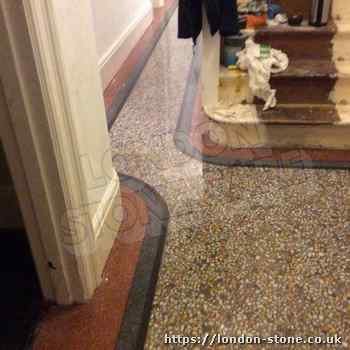
Terrazzo is an attractive and durable flooring, thus its popularity as flooring in supermarkets, airports, commercial and industrial buildings. Gradually, Terrazzo will lose the original finish. The surface damage is due to wear scratches and surface damage.
The only way to restore the original finish is by polishing the Terrazzo to the highest standard. We use professional Terrazzo polishing machines and diamond tools to grind and polish the Terrazzo. Once the Terrazzo has been cleaned and polished, we could use a sealer which offers protection against routine spills.
Find out moreabout our Terrazzo Polishing Covent Garden services along with our wide-ranging stone floor cleaning restoration services or get a free Quote
Sandstone Floors
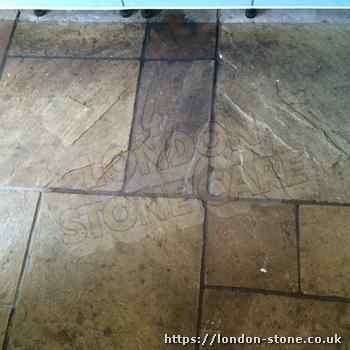
Sandstone is formulated principally of quartz, iron oxide, silica and calcium based deposits so it's a very sturdy stone. Sandstone can end up getting ingrained soil which makes it look dull and tough to clean.
We use a combination of machine scrubbing, hand scrubbing and pressure rinsing to eliminate all traces of old soiled sealers and clean the floor to the highest standard. Then we apply a long-lasting sealer that also makes your floor more straightforward to clean. After inspecting the floor, we are going to advise the best Sandstone restoration service.
Learn more about our Sandstone cleaning Covent Garden service as well as our extensive stone floor cleaning treatments or Book a Quote
Terracotta Floor Cleaning & Sealing
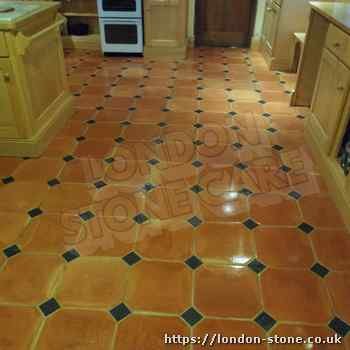
Terracotta is made of natural clay and historically has been used for roof tiles, sculptures, bricks and floor tiles.
Traditional Terracotta sealers will need frequent upkeep and re-sealing, if they're not cared for, the surface will begin to get soiled and porous.
Sealer residues, dirt and marks may be taken out with scrubbing equipment and sealer removers.
We use a resilient sealer for terracotta, and that means you get the most value from your own cleaning.
Discover moreabout our Terracotta cleaning and sealing Covent Garden service and also our wide-ranging stone cleaning solutions or Book a Quote
Slate

Slate flooring is one of the most widely used kinds of natural stone, as it calls for less routine maintenance and mopping. Whilst slate has a minimal porosity, it will probably still partially absorb and oil based spills, causing aggravating marks.
We have specialist machines and products to remove the soil and old coatings, reviving the original slate finish. Once the professional cleaning is finished , the floor is left to dry, then apply a lasting, easy to clean sealer.
If you prefer a smooth floor, we are able to grind a floor, subject into the slate being suited to grinding.
Find out about our Slate cleaning and sealing Covent Garden services along with our wide-ranging stone cleaning options or Book a Quote
Victorian Tiles Floor Cleaning
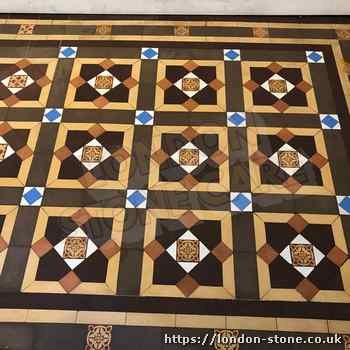
Victorian Clay Tiles are installed in a lot of Victorian and Edwardian hallways.
The main characteristics of Victorian tiles include natural clay colours and a matt finish.
Owing to how old they are, these floors have had a lot of wear and can have layers of various sealers.
Old waxes, polishes, paint spills and sealer deposits helps make cleaning many of these floors a challenge.
A colour intensifying sealer is applied following cleaning, to revive the first colours within the tiles. Topical sealers and waxes will provide the floor a sheen or glossy finish.
Find outabout our Victorian Minton Tiles cleaning and sealing Covent Garden services along with our entire professional cleaningwork or Book a Quote
Quarry Tiles Floors
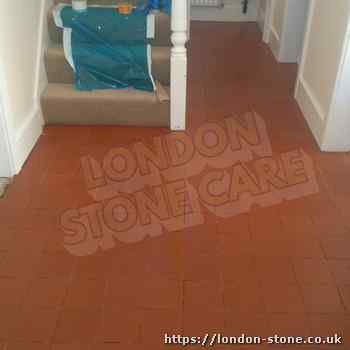
Quarry tile floors were once a major feature in terraced houses and farmhouses in the country, however, many of those floors have since fallen into different states of repair.
Whilst the tiles may appear beyond restoration, they’re remarkably robust and will look just like new after a suitable clean.
As the tiles may seem soiled and discoloured, they’re very robust and could look as good as new after a suitable clean. After cleaning, the tiles can be sealed with a lasting sealer.
Discover moreabout our Quarry Tiles cleaning Covent Garden floor restoration service and our comprehensive professional cleaning solutions or Book a Quote
Cleaning Of Porcelain Floors.
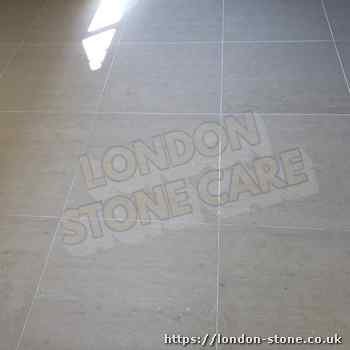
Porcelain is categorised as a ceramic, but manufactured with alternative ingredients than standard glazed tiles.
This makes Porcelain a lot more resistant to stains and easier to maintain than standard ceramic tiles.
If Porcelain is not manufactured correctly, the surface can be absorbent just like natural stone floors. The minute surface pits insure that it is difficult to remove this soil.
You need professional equipment and cleaners to eliminate this soil.
We will help stop the dirt with Porcelain sealers.
If the porcelain is a solid colour, we are able to resurface the porcelain, exactly like granite or marble restoration.
Get more information about our Porcelain Tiles Cleaning Covent Garden floor restoration services and our extensive professional cleaning work or Book a Quote.
Cleaning Ceramic Tile Floors
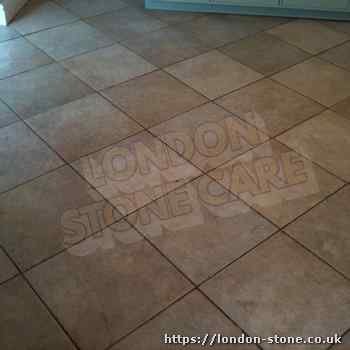
Professional cleaning of Ceramic tiles usually takes a shorter time in comparison to natural stone floors or clay tiles..
Generally speaking, the glazed finish releases dirt a lot more easily.
Expert tile and stone cleaning services will still bring a better finish.
Immediately after cleaning and restoration we apply a professional tile sealer. Ceramic tile sealing helps make cleaning much easier and helps to protect against spills.
Find out more about our Ceramic Tile And Grout Cleaning Covent Garden cleaning method along with our comprehensive professional stone floor cleaning treatments or Book a Quote with a team that works at the highest standard in stone restoration.
Some Of The Stone Floor Restoration And Cleaning Treatments Our Technicians Provide
Stone and tile cleaning is rarely just cleaning, there exists regularly more restoration required. Stone floor restoration covers a number of services. At the very least, all stone floors suffer some form of generic wear and tear. More often than not, soil, stains and traffic marks ruin floor's finish. Highly polished marble and granite floors show up wear quickly, as minute foot traffic scuff marks in the stone surface affect the luster and hold dirt. A surface sealer does not prevent porous tile and stone and tiles like Sandstone, Limestone and Terracotta gradually struggling with wear and spill problems. Most stone floor flooring has cement grout. Cement grout is typically softer compared to stone plus much more at risk of abrasive and chemical damage. Holes might be filled and cracks repaired included in a restoration. Stone floor has got the appeal that a grubby, porous surface could be taken away, exposing a pleasant new surface. Grinding and honing removes surface damage from etching and surface scratching.
Stone floor sealing is vital to help keep an innovative new stone floor finish looking stunning. Stone sealers should really be placed on new stone and tile and tile floors and soon after any floor tile cleaning, stone polishing or tile restoration work. Impregnating or penetrating sealers are employed following diamond floor polishing. Hybrid sealers or Surface sealers would be best applied to coarse tile and stone or tiles.
The original shine on a stone and tile will gradually go dull. The loss in shine is attributable to foot traffic scratches and surface damage. The only method to replace the initial finish is by polishing the stone and tile. On marble, Granite, Terrazzo, Polished Limestone and Polished Travertine floors, diamonds are utilized to get rid of the top wear and recover the first sparkle. The shine on Honed Travertine, Honed Limestone, Sandstone, Slate and Clay tiles is done by applying a top gloss sealer. Sealer removing products are applied to take away all traces associated with existing sealer, and then a fresh gloss sealer is applied.
Is there unsightly chips on your tile and stone floor?
You don't have to improve the tile and stone. Coloured resin fillers can fill chips and damage on a tile. After the resin cures, it has to be sanded and polished. Chip repairs are less costly than laying new tiles.
Contact the Industry Professionals for Natural Stone Repairs London - Call the Specialists.
Repairing Cracked Tiles
A small movement within the subfloor is going to make a crack in a marble tile. Cracks are often present in doorways as well as in between rooms. Also, a crack can appear as a result of a deficiency or weak spot within the tile. Crack repaircosts not as much as replacing the tile.
When you yourself have got a deep crack in your floor, vanity unit, tabletop or counter top, these are typically filled with coloured epoxy fillers. Hairline cracks are too fine to just accept a filler and so they need to be widened with diamond tools before these are generally filled.
Other areas near Covent Garden we help include:
Covent GardenHelpful Information
Covent Garden is a district in London, on the eastern fringes of the West End, between St Martin Lane and Drury Lane. It is associated with the former fruit-and-vegetable market in the central square, now a popular shopping and tourist site, and with the Royal Opera House, itself known as €œCovent Garden€. The district is divided by the main thoroughfare of Long Acre, north of which is given over to independent shops centred on Neal Yard and Seven Dials, while the south contains the central square with its street performers and most of the historical buildings, theatres and entertainment facilities, including the London Transport Museum and the Theatre Royal, Drury Lane. The area was fields until briefly settled in the 7th century when it became the heart of the Anglo-Saxon trading town of Lundenwic, then abandoned at the end of the 9th century after which it returned to fields. By 1200 part of it had been walled off by the Abbot of Westminster Abbey for use as arable land and orchards, later referred to as €œthe garden of the Abbey and Convent€, and later €œthe Convent Garden€. Following the Dissolution of the Monasteries it was granted in 1552 by the young King Edward VI to John Russell, 1st Earl of Bedford c.1485€“1555, the trusted adviser to his father King Henry VIII. The 4th Earl commissioned Inigo Jones to build some fine houses to attract wealthy tenants. Jones designed the Italianate arcaded square along with the church of St Paul. The design of the square was new to London and had a significant influence on modern town planning, acting as the prototype for new estates as London grew. By 1654 a small open-air fruit-and-vegetable market had developed on the south side of the fashionable square. Gradually, both the market and the surrounding area fell into disrepute, as taverns, theatres, coffee-houses and brothels opened up. By the 18th century it had become notorious for its abundance of brothels. An Act of Parliament was drawn up to control the area, and Charles Fowler neo-classical building was erected in 1830 to cover and help organise the market. The market grew and further buildings were added: the Floral Hall, Charter Market, and in 1904 the Jubilee Market. By the end of the 1960s traffic congestion was causing problems, and in 1974 the market relocated to the New Covent Garden Market about three miles 5 km south-west at Nine Elms. The central building re-opened as a shopping centre in 1980 and is now a tourist location containing cafes, pubs, small shops, and a craft market called the Apple Market, along with another market held in the Jubilee Hall. Covent Garden falls within the London boroughs of Westminster and Camden and the parliamentary constituencies of Cities of London and Westminster and Holborn and St Pancras. The area has been served by the Piccadilly line at Covent Garden tube station since 1907; the 300 yard journey from Leicester Square tube station is the shortest in London.